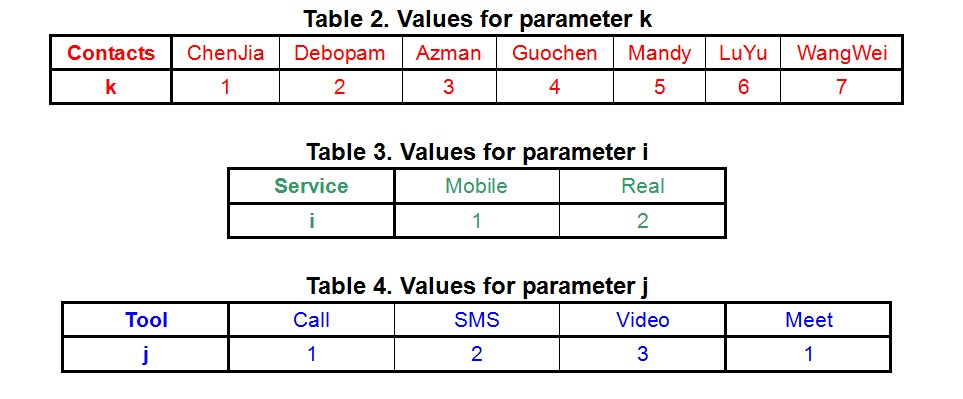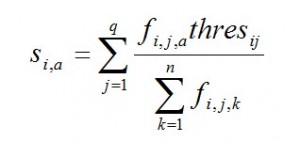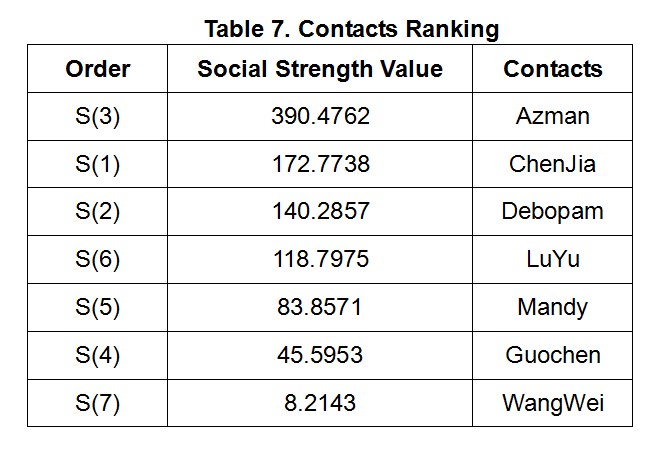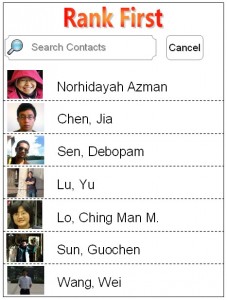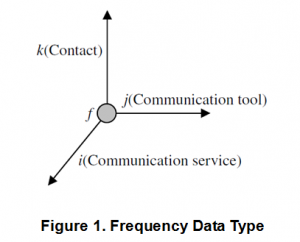Calculation Method
In order to add relevant credits with each person on mobile contacts based on every interaction, the contacts priority ranking algorithm can be adopted as the social ranking algorithm in this application.
The proposed algorithm is based on the Social Strength Calculation Approach, and the evaluation criterion mainly is the user’s mobile communication history.
Here, we suppose that the user has seven contacts in his mobile contacts list, and the communication history record is shown as the Table 1 below.
For the reason that each frequency parameter f has three dimensions i, j and k, like the Figure below.
Then, we can get the relevant values for the parameters i, j and k in the following tables:
After that, we can use these values to transform the mobile communication history record table to the frequency logs table below.
Then, the utility function below can be used to formulate the social strength calculation.
What’s more, because different communication methods have different weight and will add different credits to the social strength with each contact, so in this application we set that “Real Meet” > “Video” > “Call” > “SMS”. Accordingly, we set the weight parameters as the table below.
For Communication Service of Mobile Communication (i=1). The strength of the user with each contact is (from a=1 to a=7):
Hence, we get:
-
S(1,1)=100.7738
S(1,2)=104.2857
S(1,3)=210.4762
S(1,4)=45.5953
S(1,5)=47.8571
S(1,6)=82.7975
S(1,7)=8.2143
For Communication Service of Real Communication (i=2). The strength of the user with each contact is (from a=1 to a=7):
Hence, we get:
-
S(2,1)=60
S(2,2)=30
S(2,3)=150
S(2,4)=0
S(2,5)=30
S(2,6)=30
S(2,7)=0
After the strength of each communication service of contact a is calculated, the overall strength of that individual contact can be calculated accordingly by the following function:
Hence, we get:
-
S(1)= 172.7738
S(2)= 140.2857
S(3)= 390.4762
S(4)= 45.5953
S(5)= 83.8571
S(6)= 118.7975
S(7)= 8.2143
Then the application will be able to adopt the calculated results to rank the contacts in a descending order. For example:
Finally, we can get the contacts ranking result as the figure below.


